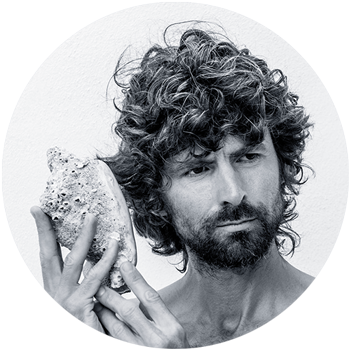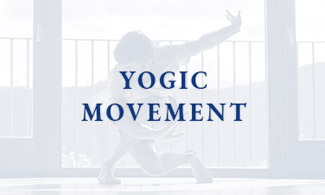
Haṭha Yoga Tantra
Haṭha yoga is a tantra
Tantra and Yoga are classic examples of Sanskṛt words that encode vast oceans of meaning. Tantra and Yoga are huge, vast topics. I find it somewhat tragic how narrow and attenuated a sense of meaning these words evoke for some people these days. I would suggest that we can all benefit from working with tantric principles to invite yoga more fully into our lives.
Simply stated: yoga is balance, integration, harmony. Who does not want more of these?
Yoga is the experience of oneness, of all-one-ness, of all-togetherness, wholeness, in the middle of the constant change and whirling wonder of nature.
Tantra is the ‘technology’: the ’means’ to work with the reality of ever-changing nature and our multifaceted experience of existence so we can experience yoga.
Yoga comes from the root ‘yuj’ which means to connect, to link the various powers of our individual human nature: our emotions, our sensings, our bodies with their motor and sense powers, our minds and intellects; all of these miraculous powers of which we are constituted. The idea in yoga is that we yoke them to the underlying consciousness that enables and animates them all, so we may integrate them into a cohesive whole.
Tantra can be construed in different ways
One meaning of the verb ‘tan’ is to expand. The noun ‘tanum’ signifies the body, and it connotes the fragility of our human body as a non-stable entity that is always changing and is susceptible the manifold influences of the broader nature of which it is a part.
The verb root ‘trā’ means to protect.
One of the ways tantra can thus be understood is as the means to protect our body-housed individual consciousness from the natural sense of limitation ‘that flesh is heir to’. Given that the body and the body-borne powers that we experience life through are always subject to change, it is altogether normal that we can become identified with change and limitation. Tantra works with the reality of nature and the phenomenological world of pulsating pairs of opposites to foster integration, harmony and help us expand our limited ideas about who we are and what we are made of.
Haṭha yoga is tantra, because it works with spanda, pulsation, a basic tantra concept.
Ha means sun, heating, expanding.
Tha means moon, cooling, contracting.
And yoga means balancing, harmonising
So the term haṭha yoga tells us explicitly what yoga is all about: the harmonisation of the apparent pairs of opposites.
Yoga is the balancing of seemingly opposing forces.
First of all, this means that Yoga is about letting the pairs of opposites meet and get acquainted, get to really know and appreciate each other. Yoga is about working with these forces, allowing for the apparent pairs of opposites to become so deeply intimate that they can join in a type of ‘marriage’. With practice and patience, these different forces and capacities can become more thoroughly and beautifully integrated. As integration deepens, the mutually complementary potential of the different and sometimes seemingly opposed forces or polarities within our being emerges more fully. In such a dynamic, integrated state, these different capacities can then readily and seamlessly work to deepen and sustain harmony, even as life, with all its constant change, ups and downs, continues to whirl about us.
This is establishment in yoga.
And this is yoga āsana.
Āsana means ‘seat’. It is defined in the Yoga Sūtra as sthira sukha meaning steady and easy. Yoga āsana is the seat of sustainable, steady, easy awareness: when we sit, stand, experience, established in that integrated state. In a state of yoga āsana, all of our powers are connected and attuned, and illumined by their connection to the light of our conscience.
It is thus ironic that haṭha yoga or āsana practice is sometimes these days being propagated as some limited outlying branch of yoga or a type of ‘partial’ yoga, a merely physical practice, a mat practice, or some kind of fitness option; because haṭha yoga, just like all the other yogas, karma yoga, jñāna yoga, bhakti yoga, rāja yoga for example, is yoga. That is the principle that counts, to connect, to integrate, to ‘yogify’.
So certainly, yes, while many haṭha yoga techniques use the body and the bodily powers more overtly, more grossly and a little more outwardly demonstrably than some other yoga modalities or techniques, if these physical practices are really yoga then these techniques will also invite the powers of our senses, of our minds, intellects and our hearts into the moment, into the movement, into the practice: into the opportunity to train our innate capacity for all-oneness, for togetherness, for wholeness, balance and integration.
There is no such thing as partial yoga
There is no such thing as ‘just the physical yoga practice’! One can do physical practices that makes use of shapes or forms that are derived from yoga methodologies, or that ‘look like’ yoga. But if the practice we are working with is yoga, then it will always be more than just merely physical, or merely mental, or merely intellectual, or merely emotional, because yoga is about inviting the whole system into the practice.
Yoga is always about inviting the whole system into the present moment. Tantra-s, such as haṭha yoga, are thoroughly tested technologies, or methods, that work with the reality of life, our human condition and constitution, to help train us more deeply in the ways of whole system presence and integration.

James Boag | Whole Life Yoga
The yoga of the whole human being. Practical philosophy, storytelling, movement, inquiry, looking in ways that reach beyond our habitual ways of looking.
Listen to James’ unique whole life yoga perspectives on the WHOLE LIFE YOGA podcast.











